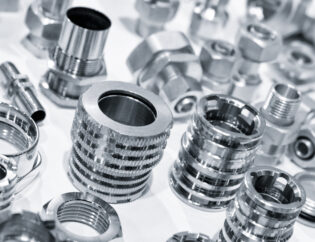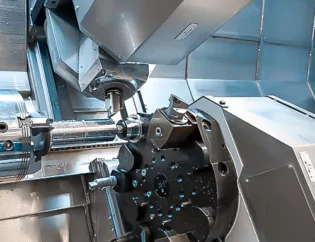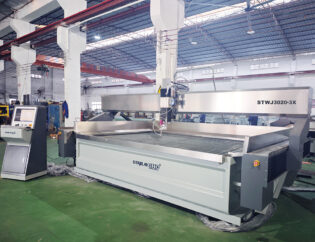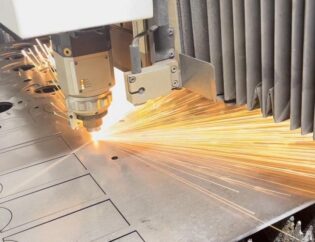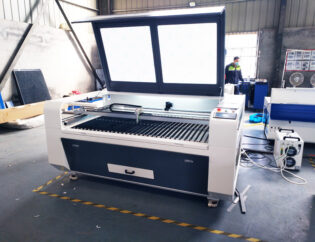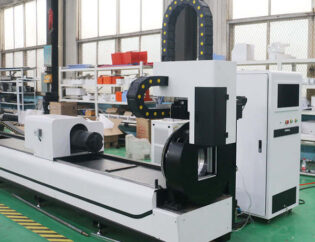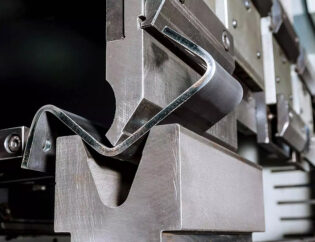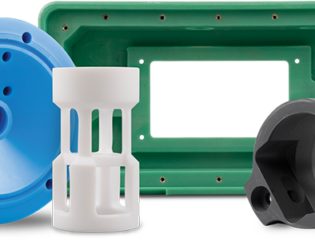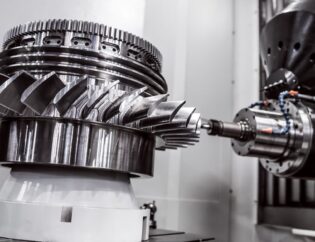Air bending sheet metal is a crucial technique in metal fabrication, allowing for precise and efficient shaping of materials. This method utilizes a punch and die system to create bends without fully deforming the metal, preserving its integrity. Understanding air bending is essential for fabricators seeking to enhance their skills and improve production quality.
In this guide, readers will explore the fundamentals of air bending, including the necessary tools, techniques, and best practices. We will delve into the physics behind the process, ensuring a solid grasp of how to achieve accurate bends. Additionally, practical tips and troubleshooting advice will be provided to help you navigate common challenges.
By the end of this guide, you will be equipped with the knowledge to confidently execute air bending operations. Whether you are a beginner or an experienced fabricator, this comprehensive resource will enhance your understanding and application of this vital metalworking technique. Prepare to elevate your skills and achieve exceptional results in your projects.
A Comprehensive Guide to Air Bending Sheet Metal
Imagine transforming a flat, lifeless sheet of metal into a complex, functional component with precise bends and curves—this is the art and science of sheet metal bending. Whether you’re a manufacturing professional or a product designer, understanding the intricacies of this process is crucial for creating durable and efficient designs. From mastering techniques like V-bending and air bending to selecting the right tools such as press brakes and rollers, this guide will equip you with the knowledge to tackle any bending challenge. Ready to dive into the world of sheet metal bending and discover how it shapes the manufacturing industry? Let’s get started.
Understanding Air Bending
Air bending is a widely used technique in sheet metal fabrication, known for its flexibility and efficiency. In this process, the punch tip only contacts the workpiece at the edges, allowing for a gap between the sheet and the die. This gap enables manufacturers to achieve various angles without changing the tooling, making it a preferred method in many industries.
Technical Features of Air Bending
Air bending offers several advantages, including reduced tooling costs and the ability to work with different materials and thicknesses. Below is a comparison of key technical features associated with air bending:
| Feature | Description |
|---|---|
| Tooling Requirement | Single die can accommodate multiple angles |
| Accuracy | ± 45′ |
| Material Contact | Partial contact with the die |
| Speed | Faster, suitable for high flexibility |
| Cost | No tooling investment, higher part price |
| Maintenance | Less pressure on equipment, less maintenance |
Types of Bending Techniques
While air bending is popular, there are other bending techniques that serve different purposes. Here’s a comparison of various bending methods:
| Bending Type | Description |
|---|---|
| Air Bending | Uses a gap between the die and sheet, allowing for flexibility in angles. |
| Bottom Bending | Fully presses the sheet into the die for precise angles. |
| V-Bending | Utilizes a V-shaped die and punch for various angles. |
| Wipe Bending | Clamps the sheet and bends it over a die edge for sharp angles. |
| Roll Bending | Uses rollers to create curves and cylindrical shapes. |
| Coining | Applies extreme pressure for high precision and minimal springback. |
Advantages of Air Bending
Air bending is favored in many manufacturing settings due to its numerous benefits. It allows for quick adjustments in bend angles without the need for extensive retooling. This flexibility is particularly advantageous in high-volume production environments, such as those found at companies like Komaspec and ProLean Tech.
Applications of Air Bending
Air bending is commonly used in various industries, including automotive, aerospace, and electronics. Its ability to produce complex shapes efficiently makes it ideal for creating components like brackets, enclosures, and structural parts. The technique is also beneficial for manufacturers looking to minimize costs while maintaining quality.
Challenges in Air Bending
Despite its advantages, air bending does come with challenges. One of the primary issues is springback, where the material attempts to return to its original shape after bending. This can lead to inaccuracies in the final product. Manufacturers often need to account for this by overbending the material slightly.
Overcoming Springback
To mitigate springback, operators can employ several strategies. These include using materials with lower elasticity, adjusting the punch depth, and utilizing advanced CNC controls to ensure precise bends. Companies like The Fabricator emphasize the importance of understanding material properties to achieve optimal results.
Bottom Bending vs. Air Bending
While air bending is versatile, bottom bending offers higher precision. In bottom bending, the material is pressed fully into the die, resulting in more accurate angles and less springback. However, this method requires unique tooling for each angle, which can increase costs and setup time.
Comparison of Bottom Bending and Air Bending
| Feature | Air Bending | Bottom Bending |
|---|---|---|
| Tooling Requirement | Single die for multiple angles | Unique die required for each angle |
| Accuracy | ± 45′ | ± 15-30′ |
| Material Contact | Partial contact with the die | Full contact with the die |
| Speed | Faster, suitable for high flexibility | Slower |
| Cost | No tooling investment, higher part price | Tooling investment, lower part price |
| Best Use Case | Parts with flexible angles | Parts requiring strict accuracy |
Conclusion
Air bending is a crucial technique in sheet metal fabrication, offering flexibility, speed, and cost-effectiveness. While it has its challenges, understanding the process and its applications can lead to significant advantages in manufacturing. As industries continue to evolve, techniques like air bending will remain essential for producing high-quality components efficiently.
Frequently Asked Questions
Related Video
What is air bending?
Air bending is a sheet metal fabrication technique where the punch tip contacts the workpiece at the edges, leaving a gap between the sheet and the die. This allows for flexibility in achieving various angles without changing tooling.
What are the advantages of air bending?
Air bending offers reduced tooling costs, the ability to work with different materials and thicknesses, and faster production times. It is ideal for high-volume manufacturing where flexibility is essential.
How does springback affect air bending?
Springback occurs when the material attempts to return to its original shape after bending, which can lead to inaccuracies. Operators often need to overbend the material to compensate for this effect.
What is the difference between air bending and bottom bending?
Air bending allows for flexibility and faster production but is less precise than bottom bending, which fully presses the material into the die for more accurate angles.
In which industries is air bending commonly used?
Air bending is widely used in industries such as automotive, aerospace, electronics, and construction, where it is essential for creating components like brackets, enclosures, and structural parts.

